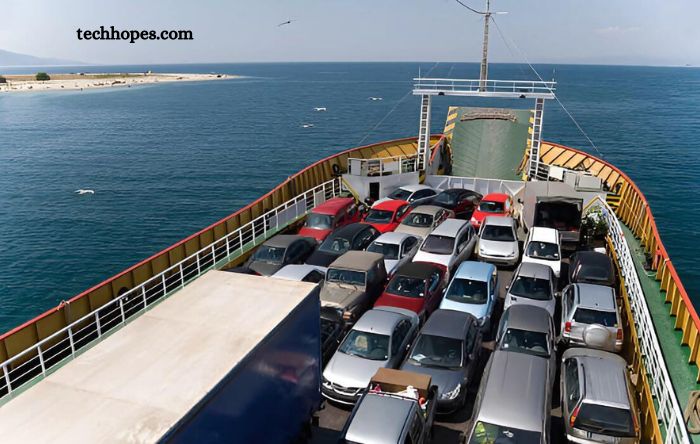Why Seamless Connectivity Matters for Digital Nomads and Travelers

Picture this: you’re about to join an important client call from a café in Bangkok, but the WiFi crashes just as you’re introducing yourself. That sinking feeling? It’s become all too familiar for remote workers worldwide. The number of digital nomads in 2024 is projected to reach a staggering 40 million globally, according to a recent MBO Partners report . These location-independent professionals don’t just want reliable internet – they desperately need it to survive and thrive.
Germany has emerged as one of Europe’s top destinations for digital nomads, offering excellent infrastructure, vibrant coworking spaces, and strong internet coverage across major cities like Berlin, Munich, and Hamburg.
The country’s robust telecommunications network makes it an ideal testing ground for various connectivity solutions. When exploring Germany’s tech-forward cities, many nomads discover that having the best esim for germany becomes crucial for maintaining productivity while moving between locations. Whether you’re working from a bustling Berlin startup hub or a quiet Munich café, reliable connectivity isn’t negotiable.
Why Internet Reliability Defines Your Travel Success
Your internet connection isn’t just about staying online – it’s the lifeline that keeps your entire nomadic lifestyle functioning smoothly.
Professional Productivity on the Move
Remote work technology has revolutionized how we approach productivity, but it’s only as strong as your weakest connection. Video calls freeze at the worst moments, cloud documents won’t sync, and deadlines suddenly feel impossible when your internet decides to take a vacation.
Most digital nomads juggle multiple time zones, making every connection hiccup feel like a small disaster. You can’t reschedule that 6 AM call with New York just because the hostel WiFi is acting up. Professional credibility depends on showing up consistently, regardless of your physical location.
Managing Travel Logistics Digitally
Modern travel runs on digital systems. Flight check-ins, hotel confirmations, transportation apps – they all demand constant connectivity. When your connection fails during a last-minute booking change, you’re not just inconvenienced; you might be stranded.
Travel internet solutions become particularly critical during unexpected situations. Flight cancellations, booking errors, or sudden itinerary changes require immediate online action. Without reliable internet, these manageable bumps can become major travel nightmares.
Staying Connected During Emergencies
Emergency situations abroad highlight just how vital seamless connectivity becomes. Whether it’s contacting family during a natural disaster, reaching local emergency services, or accessing critical information during a crisis, your internet connection could literally be a lifesaver.
Banking issues, visa problems, or medical emergencies don’t wait for convenient WiFi access. Having multiple connectivity options ensures you’re never completely cut off when things go sideways.
Essential Connectivity Solutions for Modern Nomads
Understanding your connectivity options helps you build a robust system that won’t leave you stranded offline.
eSIM Technology Revolution
eSIM technology has transformed how nomads approach international connectivity. Instead of hunting for local SIM cards in every new country, you can activate data plans remotely before you even land. No more airport kiosk queues or language barriers – just instant access to local networks.
The security advantages are impressive too. Physical SIMs can be stolen or cloned, but eSIMs remain locked to your device. For nomads handling sensitive client data or financial information, this added protection isn’t just nice to have – it’s essential.
Portable WiFi Devices
Pocket WiFi devices create your own personal internet bubble wherever you go. These little gadgets connect to local cellular networks and broadcast WiFi for all your devices simultaneously. Your laptop, tablet, and phone all stay connected without draining your smartphone’s battery through constant hotspot use.
Best travel wifi devices often outperform hotel or café connections because they’re accessing premium network tiers. Plus, you control the password – no more awkwardly asking café staff for WiFi details every time you need to reconnect.
Local SIM Cards vs Global Plans
Traditional local SIM cards still have their place, especially for extended stays. They often provide the cheapest data rates and fastest speeds since you’re accessing domestic networks directly. However, they require unlocked phones and can be frustrating to acquire in countries where you don’t speak the language.
Global connectivity plans offer convenience but usually at higher per-gigabyte costs. The trade-off between price and hassle varies depending on your travel style and budget constraints.
Overcoming Common Connectivity Challenges
Even with the best planning, connectivity issues will arise. Knowing how to handle them separates successful nomads from frustrated ones.
Dealing with Network Dead Zones
Remote destinations often mean spotty coverage, regardless of your connectivity solution. Mountain villages, rural areas, and some island locations simply don’t have the infrastructure to support high-speed internet consistently.
Smart nomads research connectivity conditions before booking accommodations. Online forums, nomad communities, and local Facebook groups often provide real-world insights about internet quality that official coverage maps miss entirely.
Managing Data Costs Across Borders
Data costs can spiral quickly without careful planning. International roaming charges still exist, and unlimited plans rarely mean truly unlimited when you’re abroad. Understanding fair usage policies and data throttling helps avoid nasty billing surprises.
Setting up data monitoring alerts prevents accidental overages. Most modern phones include built-in tracking, but third-party apps often provide more detailed insights into your usage patterns across different networks and countries.
Backup Connection Strategies
Redundancy saves the day when primary connections fail. Seamless connectivity isn’t about having one perfect solution – it’s about having multiple options that work together. Many successful nomads carry both eSIM-enabled devices and portable WiFi units as backup systems.
Coffee shops, libraries, and coworking spaces provide emergency connectivity when all else fails. Building a mental map of reliable backup locations in each city you visit creates a safety net for crucial work deadlines.
Connectivity Solutions Comparison
| Solution Type | Setup Time | Cost Level | Coverage | Best For |
| eSIM | 5 minutes | Medium | Global | Multi-country travel |
| Pocket WiFi | 10 minutes | High | Regional | Teamwork/multiple devices |
| Local SIM | 30+ minutes | Low | Single country | Extended stays |
| Hotel WiFi | Instant | Free | Limited | Light browsing |
| Coworking Space | 15 minutes | Medium | Excellent | Professional work |
Your Connectivity Questions Answered
How much data do digital nomads typically use monthly?
Most nomads use 20-50GB monthly, depending on video calls, streaming, and cloud storage needs.
Can I rely solely on hotel and café WiFi?
Not recommended for professional work – speeds and reliability vary dramatically across locations.
What’s the biggest connectivity mistake nomads make?
Assuming free WiFi will handle their professional needs without testing speeds beforehand.
Staying Connected in an Unpredictable World
Seamless connectivity isn’t just about having internet access – it’s about maintaining your freedom to work and live anywhere. As the nomad community continues growing, reliable connectivity becomes the foundation that makes location independence possible.
The tools exist today to stay connected almost anywhere on Earth. The challenge isn’t finding solutions; it’s choosing the right combination for your specific travel style and work requirements. Perhaps the real question isn’t whether you can afford reliable connectivity, but whether you can afford to travel without it.




